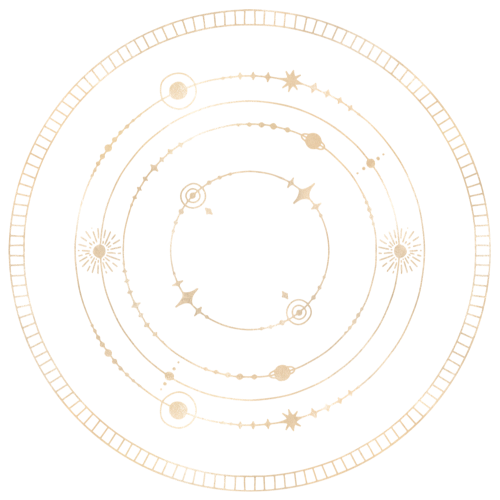Yogi Bhanu
Astro sound therapy with Indian classical music - Raga
We know how beautiful the effect of melodies can bring us into. It can completely change our mood and feeling to something else. Every sound that we listen creates a sensation in our body and creates a visual impression of particular that time or a vision of the past comes because of the sound or a melody.
This study will dive deep into and take you into the understanding of astrology and Indian classical music works together in harmony.
Medicinal Astro sound therapy approach which bases on Vedic astrology and Indian classical music. An integrated approach of both therapies combing the element of space and its sound to bring the transformational experience in our life.
This study will dive deep into and take you into the understanding of astrology and Indian classical music works together in harmony.
Medicinal Astro sound therapy approach which bases on Vedic astrology and Indian classical music. An integrated approach of both therapies combing the element of space and its sound to bring the transformational experience in our life.
The significance of Indian classical music is based on understanding that everything is vibration, such as Om. From that om produces all the sounds. Every matter which is in the space is having vibrations.
Here in this blog, I’m bringing out an interesting science. We will understand the relationship between planets, zodiac signs, and Svaras (musical note). The essence of this piece of the study lies in the strong influence of a harmonized and complex forms of sound as Ragas known in Indian music that effectively stimulate physical, physic-chemical, and biochemical reactions through the medium of the abstract form of the human psyche and surrounding context.
The total cosmos is a larger unit, believed to be formed with a big sound that enforces the elements to unite, disperse to transform, or to make the complex elemental world that of ours. Each form of sound, element, and compound has a special sound attached with, so as each human being. Hence, a way of performing a harmonized complex group of sounds influences on the abstract sphere of human beings to the physical forms of energy that exist in the entire universe.
The whole cosmos is formed on vibrations, what we are seeing and hearing are the forms of vibrations. Even when we see them as simply vibrations it will appear that how our emotions, psychic nature is associated with the vibrations. We use their root sound to bring the result of the desire for spiritual awakening and fulling the purpose of your soul.
The total cosmos is a larger unit, believed to be formed with a big sound that enforces the elements to unite, disperse to transform, or to make the complex elemental world that of ours. Each form of sound, element, and compound has a special sound attached with, so as each human being. Hence, a way of performing a harmonized complex group of sounds influences on the abstract sphere of human beings to the physical forms of energy that exist in the entire universe.
The whole cosmos is formed on vibrations, what we are seeing and hearing are the forms of vibrations. Even when we see them as simply vibrations it will appear that how our emotions, psychic nature is associated with the vibrations. We use their root sound to bring the result of the desire for spiritual awakening and fulling the purpose of your soul.
Ragas
"Ragas" (the word Raga means "color" or "mood" in Sanskrit) refer to the melodious modes used in Classical Indian music. Each raga rests on five or more notes upon which a melody is built. Ragas can also denote specific melodies as well. The tradition of Classical Indian music believes that ragas awaken different emotions or "moods" in people. Therefore, its "pictures" the experience of the listener. Ragas are usually sung according to different seasons or times of the day. For instance, Malhar raga groups are played during the Monsoon season. Classical Indian Music is always built on ragas. Even non-traditional Indian music such as popular film songs can base its compositions on ragas.
"Ragini" is a term used to refer to the "female" counterpart of ragas. Even though notes do make up an important portion of the ragas, they cannot constitute the raga by themselves. Ragas are beyond scales. Many ragas share the same scale too.
"Ragini" is a term used to refer to the "female" counterpart of ragas. Even though notes do make up an important portion of the ragas, they cannot constitute the raga by themselves. Ragas are beyond scales. Many ragas share the same scale too.
In Indian classical music there are:
12 Swaras
7 Shuddha SA RE GA MA PA DHA NI
12 Swaras
7 Shuddha SA RE GA MA PA DHA NI

5 Vikrut re ga ma’ dha ni
SA and PA always remain shudh (pure)
Two of the seven notes, Sa and Pa are unchanging.
The other four notes, Re, Ga, Dha, and Ni can go down half a tone to create four new notes. These are called Komal Re, Komal Ga, Komal Dha and Komal Ni respectively. Finally, the note Ma can be raised half a tone to create Tivra Ma.
Ragas that use Komal notes are usually more romantic in nature and create nostalgic feelings, pleasing the human spirit. This is similar to the minor mode in Western Classical Music. By contrast, the ragas using the Tivra Ma express dynamism and action, similar to the major mode in the West.
Now let us see the relationship between the zodiac and Swaras
Two of the seven notes, Sa and Pa are unchanging.
The other four notes, Re, Ga, Dha, and Ni can go down half a tone to create four new notes. These are called Komal Re, Komal Ga, Komal Dha and Komal Ni respectively. Finally, the note Ma can be raised half a tone to create Tivra Ma.
Ragas that use Komal notes are usually more romantic in nature and create nostalgic feelings, pleasing the human spirit. This is similar to the minor mode in Western Classical Music. By contrast, the ragas using the Tivra Ma express dynamism and action, similar to the major mode in the West.
Now let us see the relationship between the zodiac and Swaras
12 Zodiac signs
There are 12 zodiac sign and also 12 Swaras. Each swara is associated to zodiac sign. Means that every zodiac sign is a sound (swara) or has a sound. Every zodiac sound represents its own vibrations. How do we know that which swara is for which house?

7 planets
5 retros gradable: mercury, Venus, Mars, Jupiter, Saturn
2 no/retrograde(unchangeable) sun and moon
5 retros gradable: mercury, Venus, Mars, Jupiter, Saturn
2 no/retrograde(unchangeable) sun and moon
Sun and moon
Which is also SA and PA, because they always remain sure. They only own one zodiac sign. And other 5 planets get 10 zodiac signs. Each planet owns two zodiac signs.
Which is also SA and PA, because they always remain sure. They only own one zodiac sign. And other 5 planets get 10 zodiac signs. Each planet owns two zodiac signs.

Let’s see in the chart how they associated
There are seven svara’s and seven planets
There are seven svara’s and seven planets
Now 5 Svara are changeable except sa and pa.
Each planet owns Sudha and Komal Svaras as their two zodiac signs.
Each planet owns Sudha and Komal Svaras as their two zodiac signs.
Both astrology and music have curing effects in medical parlance.
A weak planet causing physical or mental hardship can be rid of by strengthening the planet with relevant Chanting of mantras or slokha, raga and Svara.
A weak planet causing physical or mental hardship can be rid of by strengthening the planet with relevant Chanting of mantras or slokha, raga and Svara.

Similarly, there are ragas which are stated to give relief for the ailments. On the basis of this understanding, we read your musical astrology how planets will sound in your life, and also, we this a medical therapy to bring astrology and sound together. to give the right raga for wellbeing.
In every raga, there is Svara which more emphasized and which are neglected sometimes to form various compositions of music. It’s the same as what planets are doing sometimes they are in full authority when they are in emphasized state and sometimes, they are not. we here try to bring the science out from this to able to give different compositions to the person with what they want to bring in their life.
Through studying the astrology chart, we generate a study or reports of channelizing the energy of those planets with help of sounds or ragas.
Some of the ragas associated with zodiac sign.
In every raga, there is Svara which more emphasized and which are neglected sometimes to form various compositions of music. It’s the same as what planets are doing sometimes they are in full authority when they are in emphasized state and sometimes, they are not. we here try to bring the science out from this to able to give different compositions to the person with what they want to bring in their life.
Through studying the astrology chart, we generate a study or reports of channelizing the energy of those planets with help of sounds or ragas.
Some of the ragas associated with zodiac sign.
Understanding the therapy
In sound astrology, we see which are the planets associated with zodiac signs and how is their relationship. Based on the calculations of stronger and weaker planets Svaras and ragas can be given to listen to increase the strength of the planet if its week.
Each raga has vadi and samvadi
Each raga has vadi and samvadi
Vadi / samvadi in raga
The different notes (swara) of the rag have different levels of significance. The note which is strongly emphasized is referred to as the vadi. Another note which is strong but only slightly less so is the samvadi. A note which is neither emphasized nor de-emphasized is called anuvadi. Notes which are de-emphasized are referred to as being durbal, while notes which are excluded are called vivadi.
Similarly in the planet also it is very similar when they are in full control and when they are not. means when they are in samvadi, vadi, anuvadi or durbal.
Ragas are compositions between the specific Svara based on basis of vadi/samvadi. In astrospace also planets are constantly changing their place to create a musical raga. When the planet is in full control, that defines it is in vadi condition. When the planet is in low power can be said it is in samvadi and when it is completely in a null state it can be in durbal state.
Similarly in the planet also it is very similar when they are in full control and when they are not. means when they are in samvadi, vadi, anuvadi or durbal.
Ragas are compositions between the specific Svara based on basis of vadi/samvadi. In astrospace also planets are constantly changing their place to create a musical raga. When the planet is in full control, that defines it is in vadi condition. When the planet is in low power can be said it is in samvadi and when it is completely in a null state it can be in durbal state.
Vadi swara is also helpful to identify the appropriate time for singing or playing a raga. If the vadi swara of a raga is from the purvanga part of the saptak i.e., “Sa Re Ga Ma”, then it is called purvanga vaadi raaga and usually, the time for singing or playing purvanga vaadi raagas is from 12 pm to 12 am. For example, ragas like Bhimpalasi, Pilu, Purvi, Marwa, Yaman, Bhoopali, and Bageshree etc. have purvanga vadi swara and so the time for singing and playing these ragas is between 12 pm to 12 am.
In the same way, if the vaadi swara of a raaga is from the utranga part of the saptak i.e., “Ma Pa Dha Ni” then it is classed as a utraanga vaadi raaga and the time for singing or playing utraanga vaadi ragas is from 12 am to 12 pm. For example, ragas in Hindustani classical music like Bhairav, Bhairavi, Bilawal, Kalingada, Sohini, and Asavari, etc. have utraanga vaadi Swara and so the time for singing or playing these ragas is between 12 am to 12 pm.
Vaadi Swara, along with the Samvadi Swara of a raga, usually brings out the uniqueness of the raga and its bhāva (mood) and rasa (emotion).
Let’s use for example with Saturn:
In a birth chart of somebody suppose Saturn is not in the right place or is at a weaker position. How the strength of Saturn can be increased will be depending the Svara associated with Saturn which is NI and ni. A melody composition based on the vadi or samvadi Svara of ni the strength of Saturn can be increased.
Vaadi Swara, along with the Samvadi Swara of a raga, usually brings out the uniqueness of the raga and its bhāva (mood) and rasa (emotion).
Let’s use for example with Saturn:
In a birth chart of somebody suppose Saturn is not in the right place or is at a weaker position. How the strength of Saturn can be increased will be depending the Svara associated with Saturn which is NI and ni. A melody composition based on the vadi or samvadi Svara of ni the strength of Saturn can be increased.

Now, this can also be dangerous if Saturn is placed in the enemy house. suppose it is situated with the sun then increasing the strength of Saturn will create problem with sun. so, lot of factors have to be considered to prescribe a raga remedy for someone.
Saturn is the last Svara as Ni and also in Vedic astrology it is the last planet, slow and cold.
Saturn own the houses of Aquarius and Capricorn.
And the Svara associated to it is Ni for Aquarius and ni for Capricorn.
When in raga if NI is samvadi then those ragas will increase the strength of the planet and brings the power of the planet in their life.
Suppose Ni is vivadi, in a raga then it there no energy or force from that planet in the compositions. There is no energy of that planet. When we look at the birth chart of the person it gives the blue print of the astrospace and studying that we can know which planet is (on the basis of Vedic astrology). This allows us also to integrate many different charts and their placements of the planets with houses giving a deeper insight about the chart. based on that study several ragas can be given to the person to listen. or even to bring desired effect.
How to find a raga?
To able to know that first we have to know on what bases raga are designed. They are designed basically into 10 different. That's A thaat is a "mode", a type of scale, in Hindustani music.
Thaat always have 7 pitches and are a basis for the organizing & classifying raags of Hindustani classical music. Thaat system was invented by Vishnu Narayan Bhatkhande (1860-1936). Bhatkhande was first Indian musicologist who wrote the modern treatise on Hindustani Classical Music, an art which was propagated mostly through oral traditions.
Saturn is the last Svara as Ni and also in Vedic astrology it is the last planet, slow and cold.
Saturn own the houses of Aquarius and Capricorn.
And the Svara associated to it is Ni for Aquarius and ni for Capricorn.
When in raga if NI is samvadi then those ragas will increase the strength of the planet and brings the power of the planet in their life.
Suppose Ni is vivadi, in a raga then it there no energy or force from that planet in the compositions. There is no energy of that planet. When we look at the birth chart of the person it gives the blue print of the astrospace and studying that we can know which planet is (on the basis of Vedic astrology). This allows us also to integrate many different charts and their placements of the planets with houses giving a deeper insight about the chart. based on that study several ragas can be given to the person to listen. or even to bring desired effect.
How to find a raga?
To able to know that first we have to know on what bases raga are designed. They are designed basically into 10 different. That's A thaat is a "mode", a type of scale, in Hindustani music.
Thaat always have 7 pitches and are a basis for the organizing & classifying raags of Hindustani classical music. Thaat system was invented by Vishnu Narayan Bhatkhande (1860-1936). Bhatkhande was first Indian musicologist who wrote the modern treatise on Hindustani Classical Music, an art which was propagated mostly through oral traditions.
In the above chart, you will be seeing various planets which are powering the effect of raga based on vadi and samvadi, similarly many other studies can be brought into considerations. Like time of the raga. which is again based on the vadi Svara. also, from which family it belongs to (jati)
Jati in saragam
The word "jati" or "jati" literally means a "caste" or "collection; as such it has numerous musical and non-musical usages. In the musical sense it can mean a rhythmic pattern, an ancient musical mode, or the number of notes in a modern mode. It is this latter definition that we will deal with here.
The number of notes in the rag is significant, for not everyone uses all seven notes. Normally, a rag will consist of either five, six, or a full seven notes.
The number of notes in the rag is significant, for not everyone uses all seven notes. Normally, a rag will consist of either five, six, or a full seven notes.
- A five-note rag is said to be an audhav jati;
- a six-note rag is said to be shadav jati;
- and one of seven notes is said to be sampurna jati.
- Furthermore, rags may be mixed jati.

That is to say that there may be different jati for the ascending and descending structures. In Astro sound therapy if someone has a weaker planet or stronger planet in the wrong place in their birth chart through the study of the raga and planets and its vadi, samvadi, jati one can prescribe or can conclude a raga to balance the effect of it.
To able to do that one can listen or sing that particular raga according to its time. this helps in balancing, reducing, or increasing the tremendous effect of the planet. This study is generated to give you an understanding of how Indian classical music is in relation to the cosmic fields and that is why specific ragas can bring specific results. Previously we have heard stories when people are singing and they have the ability to bring the rain. It is completed related to the astrospace frequency when they come to align with the sounds you create vibrations and it resonates with those elements to able to create from nothing.
To able to do that one can listen or sing that particular raga according to its time. this helps in balancing, reducing, or increasing the tremendous effect of the planet. This study is generated to give you an understanding of how Indian classical music is in relation to the cosmic fields and that is why specific ragas can bring specific results. Previously we have heard stories when people are singing and they have the ability to bring the rain. It is completed related to the astrospace frequency when they come to align with the sounds you create vibrations and it resonates with those elements to able to create from nothing.
This website uses cookies to ensure you get the best experience
OK